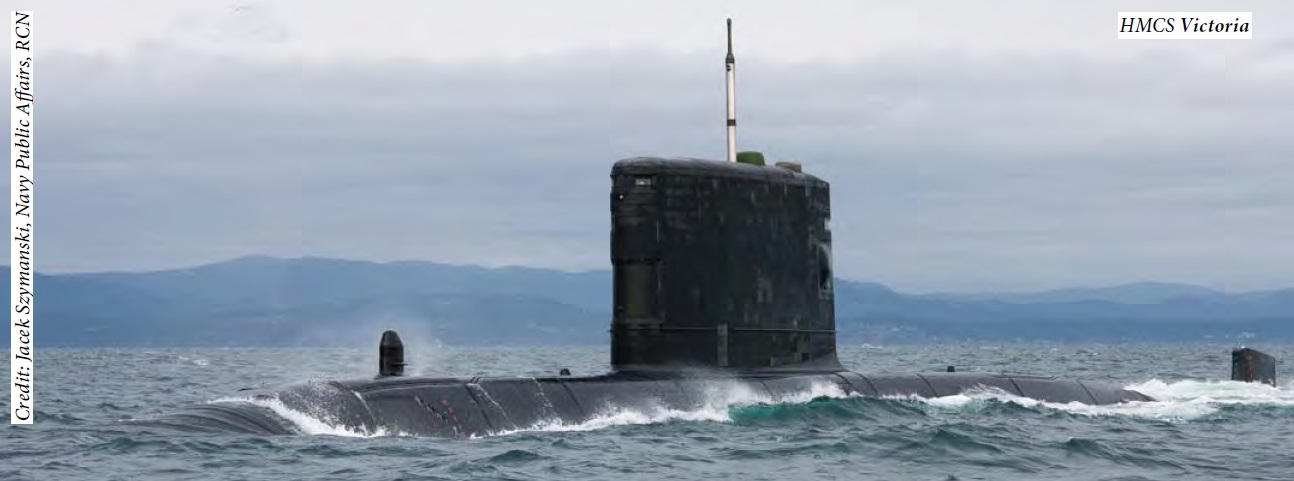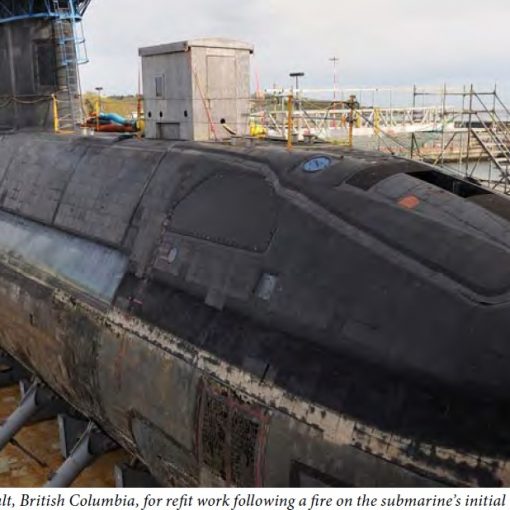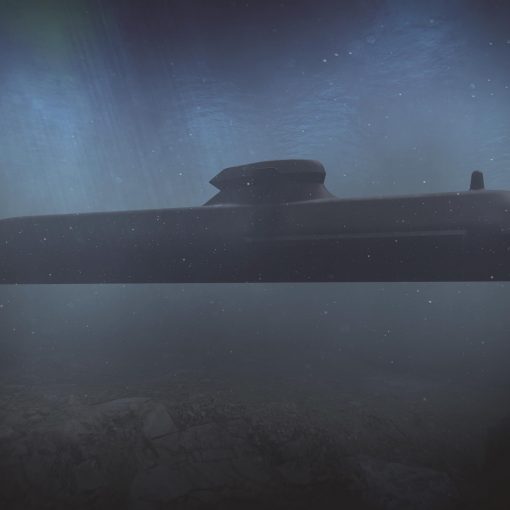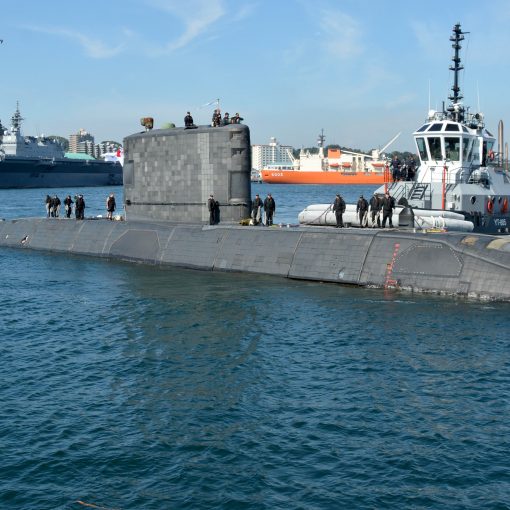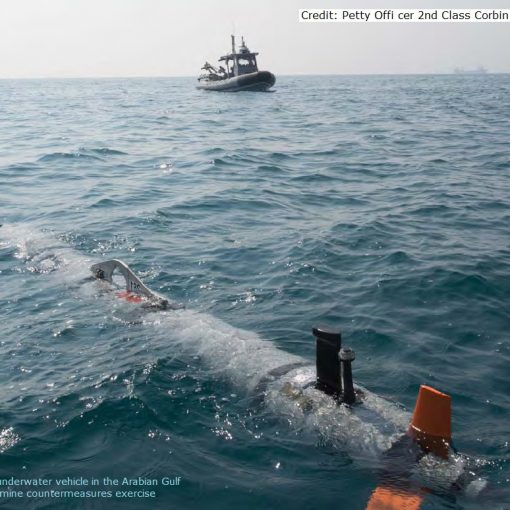In the early 1990s, the acquisition of new conventional submarines, as promised by the Conservative government after the cancellation of the nuclear submarine program in 1989, was believed unattainable. Thus the naval program was realigned and changed to “Maintain the Submarine Capability “as it was evident that the OBERON Class would reach the end of its useful life by the end of the decade. If a replacement submarine was not at hand then this vital strategic warfare capability and the expertise of those that manned them likely would be lost forever.
In 1993 the Liberal Government, under the Right Honourable Jean Chretien, was elected and initiated a process that lead to the publishing of the 1994 Defence White Paper. With respect to submarines it stated:
The Special Joint Committee on Canada’s Defence Policy found that submarines can conduct underwater and surface surveillance of large portions of Canada’s maritime areas of responsibility, require relatively small crews, can be operated for roughly a third of the cost of a modern frigate, and work well with other elements of the Canadian Forces. It also recommended that, if it should prove possible in the current environment of military downsizing around the world to acquire three to six modern diesel-electric submarines on a basis that was demonstrably cost effective (i.e. that could be managed within the existing capital budget), then the Government should seriously consider such and initiative. The Unit Kingdom is seeking to sell four recently constructed conventional submarines of the Upholder-class, preferable to a NATO partner. The government intends to explore this option.
These fiscal conditions were met in Budget 1998 and the acquisition of the Upholder-class of submarines was announced shortly thereafter in April of that year. It turned out that the submarines when acquired were not in as good a condition as was believed nor was Canada fully ready for the more exacting engineering practises that they required. Their turnover to Canada and subsequent necessary conversion for Canadian operations took many agonizing years.
Converting, maintaining and repairing these complex submarines was a struggle as our navy, its in-house maintenance capability and ad hoc contracted industry support essentially had to move from supporting a relatively simple post World War II submarine to a 1990s complex, modern high-tech submarine which are unique and not in service with any other navy. Thus all technical and support issues required a Canadian solution.
Finally in 2008 the government signed a long-term Victoria-class in-Service Support Contract (VISSC) with Babcock Canada (formerly Canadian Submarine Management Group) - aligned with Victoria Shipyards. This was as a result of the collective learning during the difficult introduction of these submarines into Canadian service, so that industry would able to bring its expertise to bear as a full partner in sustaining this unique strategic capability.
Experience since 2008 has given both Babcock Canada and in-house Fleet Maintenance Facilities considerable experience in refitting, maintaining and upgrading the Victoria-class submarines. Considerable sea time has given the navy the opportunity to grow the submarine community and deploy these unique and technically advanced submarines in the oceans around Canada and overseas in a variety of circumstances and operations.
In June of this year the government of Canada tabled a new Defence Policy “Strong, Secure, Engaged Canada’s Defence Policy 2017.” The following are direct quotes from that Policy:
- “Naval forces provide Canada with a responsive and agile means to respond across a wide spectrum of maritime situations, and serve as an instrument of national power on the international stage.”
- “This Blue Water Navy requires a balanced mix of platforms, including submarines, surface combatants, support ships and patrol vessels, in sufficient quantities to meet our domestic and international needs.”
- “The Naval Task Group is the core Royal Canadian Navy operating concept. Composed of up to four surface combatants and a joint support ship, and supplemented where warranted by a submarine, it brings with it the full breadth of combat capability, force enablers, specialized teams, maritime helicopters, and remotely piloted systems.”
- “The fleet size of 15 Canadian Surface Combatants, complemented by two Joint Support Ships, and four Victoria-class submarines provides the necessary fleet mix and capacity to deploy forces responsively, prepare follow-on forces effectively, and conduct maintenance efficiently.”
- “Investments in the Royal Canadian Navy ….
- Operate and modernize the four Victoria-class submarines.”
In Canadian Defence Review, August 2017 Issue 4, in an interview Vice Admiral Ron Lloyd Commander RCN responded to a question about the Defence Policy Review and submarines as follows:
The new Defence Policy clearly notes that submarines are a vital capability for the defence of Canada and the protection of naval assets in deployed operations. The best asset to track a submarine is, without doubt, another submarine. The Victoria Class provide Canada with this extremely valuable capability.
Just as we have successfully completed the Halifax Class Modernization program, we aim to conduct a similar type modernization in the Victoria Class that will ensure the boats remain relevant in an ever-changing and rapidly evolving security environment.
Thus it can been seen that the current government commitment to “Operate and modernize the four Victoria-class submarines” will not only maintain the submarine capability but also upgrade further its survivability and technical capability for the years to come. Equally important the current in-service support partnership with defence industry will need to develop even further to maximize its potential and keep that Canadian strategic industrial capability alive. When it comes time to consider replacing the Victoria-class then the question of how – for example, build as part of NSS or otherwise -- can be answered.
Maintaining a submarine capability would not have been possible if the original decision to purchase of the used British Upholder-class submarines in 1998 had not been taken.

